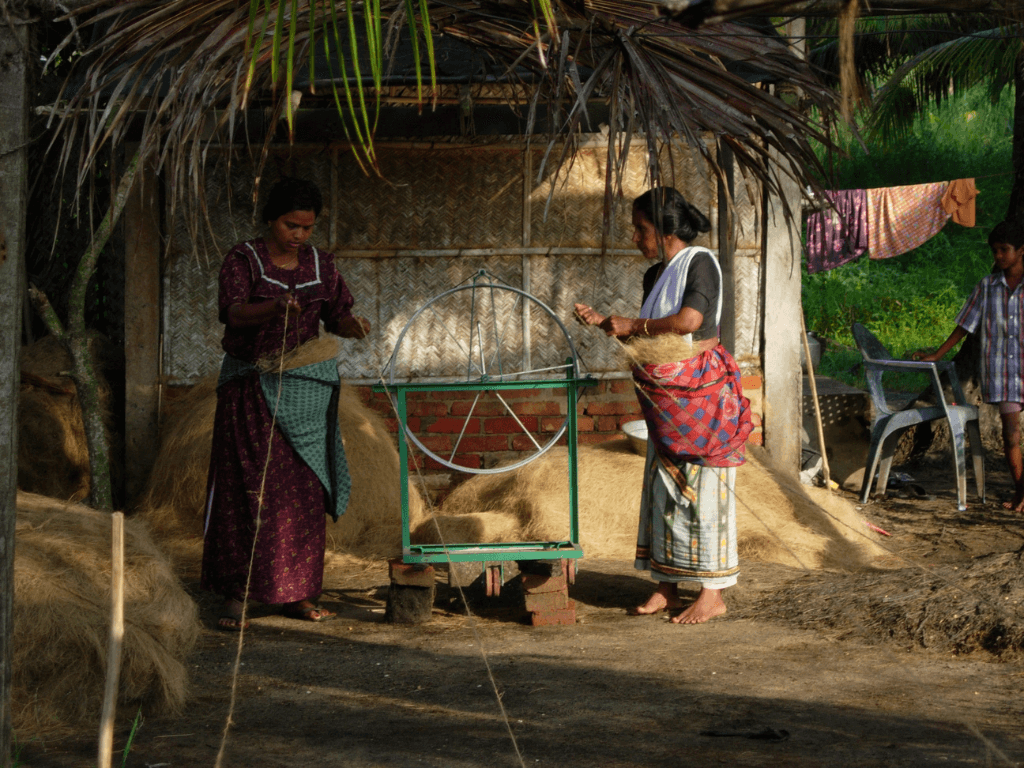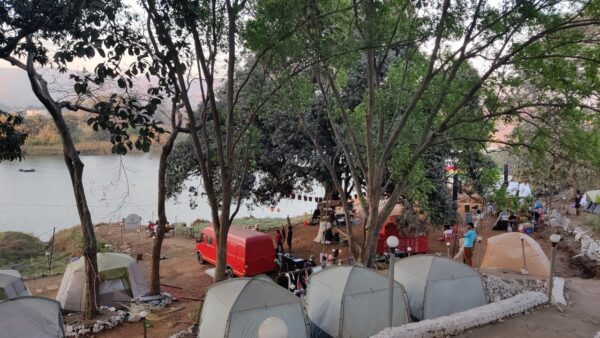As Climate Change and its impacts are worsening, the spotlight is on the most vulnerable people – women, children and the elderly. It is commonly understood that extreme weather events affect men and women disproportionately and in different ways. The dominant narrative on the theme has been to project women as victims of Climate Change. This, however, is only a part of the story; women and other vulnerable groups have emerged as climate warriors or change agents bringing about mitigation and adaptation in their communities.
The United Nations stated a few years ago that 80 percent of migrants around the world are women, and dozens of papers and studies have cited this statistic since then or generated programmes and funding to specifically address this issue. When women are displaced, they are at greater risk of violence, including sexual violence, said Michelle Bachelet, UN High Commissioner for Human Rights, even last year.
“While they sleep, wash, bathe or dress in emergency shelters, tents or camps, the risk of sexual violence is a tragic reality of their lives as migrants or refugees,” Bachelet said. “Compounding this is the increased danger of human trafficking, and child, early and forced marriage which women and girls on the move endure.”[1]
This statistic was, however, disputed in an opinion piece Do Women Really Make Up 80 Percent of All Climate Migrants? by climate writer Disha Shetty who questioned its origin and basis.
“…there are currently no comprehensive datasets that can tell us how climate migrant populations break down along gender lines. In fact, experts say there isn’t even a consensus on the definition of who counts as a climate migrant. When people migrate, it is often due to a combination of factors. Environment, when it comes into play, is just one of them. Where, then, does the 80 percent figure come from?” [2]
Gendered impact
Discounting the worldwide migration statistic, there is evidence to show that heat waves, floods and other climate events affect women and other vulnerable groups; they also adversely affect the most vulnerable among men and other genders too. The workload of underprivileged women increases; men struggle for livelihood opportunities.
The report ‘State of gender equality and climate change in South Asia and the Hindu Kush Himalayan Region’[3] underlines the need to address these gendered vulnerabilities and recognise the prevalence of patriarchal systems that hinder women’s roles and agency in adaptation and mitigation.
“…the overarching patriarchal values and social norms that are prevalent in the region determine the status of gender (in)equality across the life cycle stages (conception, birth, childhood, adolescence, and adulthood) (Gurung, 1999). Customs and cultural beliefs are used to ‘control’ women through sanctions, violence, and suppression of human rights. All these factors restrict women from acquiring control over resources, freedom in choices and mobility, participation in decision making, and having basic rights and power. Thus, women continue to be inhibited by unequal power relations, and discriminatory norms, practices and attitudes that limit their access to resources, deny them ownership and control over critical productive resources, and systematically exclude them from decision making processes (Goodrich et al., 2017a)…While this leads to an immense increase in women’s workload (Hussain et al. 2016), there is no corresponding increase in their control over productive resources or access to critical services such as credit facilities, technical inputs, or in their role/space in decision making.”
The UN Women published data-based research this April to specifically examine what do long-term shifts in temperatures and weather patterns mean for women.[4] Across four areas that it identified — changes in relative aridity, higher average temperatures, more frequent drought, and overlapping crises — the data sets showed various impacts on women and girls. Increased child marriages and less access to drinking water were among the impact of changes in relative aridity, food insecurity and dealing with poor infrastructure were among the effect of higher temperatures, more frequent droughts led also to more child marriages and food insecurity as well as increased management burdens for women and conflicts over scarce resources, and overlapping crises pointed to increased violence including intimate partner violence that women suffered around the world.
“Climate change is having profound and unequal impacts on women and girls, particularly those who are vulnerable and depend on natural resources. By examining the evidence, we can gain a better understanding of the complex relationship between climate change and gender. From changes in rainfall patterns to increased aridity and high temperatures, it is critical to identify and address these challenges with a gender lens. Having this evidence is the first step, but it is up to us all to use it to guide our actions towards solutions grounded in facts and tailored to the specific needs of those most affected,” the research report stated.
From victims to change agents
Over the years, women have evolved from being ‘the most vulnerable’ to ‘agents of change’. Cornelia Steinhäuser from Germany’s University of Münster opines that we have to hear women’s voices because they have the ability to be agents of change. “Women and girls experience disproportionate impacts at the global level, yet do not have adequate access to coping strategies due to structural inequalities and restrictive social norms,” she said. “At the same time their knowledge and experience, and their ability to act as agents of change is not yet considered adequately.”[5]
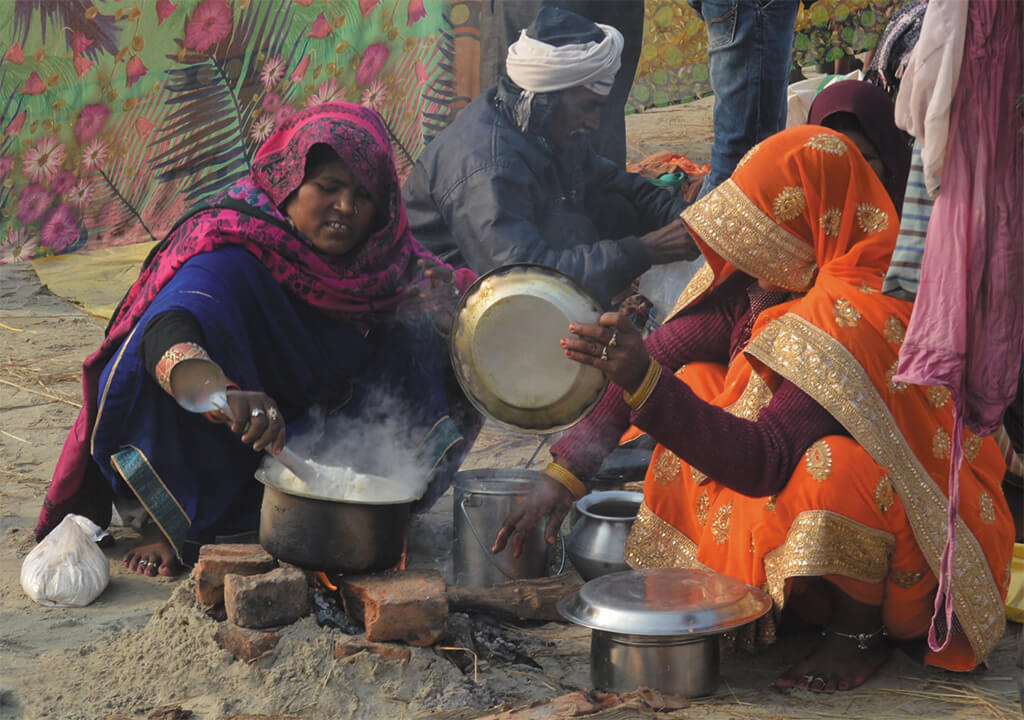
Photo: Creative Commons
Evidence shows women are actively contributing[6] to building resilient cities, and carving paths to inclusion across multiple levels of urban governance, thus helping communities become safer and more prepared to cope with disasters. C40Cities[7], a network of the world’s megacities committed to addressing Climate Change, has argued that only gender-inclusive and gender-responsive efforts to tackle climate change[8] in cities will be successful, highlighting progressive approaches by cities such as Barcelona, with its City Plan for Gender Justice. [9][10] Akila Lean, head of partnerships and communications at Industree[11] a non-profit, believes that women are, and can be, valuable ecosystem players in the climate positive story, especially when collectivised. Those working on nature-based solutions[12] are already contributing to carbon sequestration and mitigation efforts. “We must now prepare them to be part of global climate positive value chains…We only seem to be focusing on women as passive recipients of climate change, but it’s time to change the lens. They can, and are, playing a critical role in mitigation. More importantly, they have the potential to enhance their incomes and be part of the mainstream going forward,” she says.[13]
Women who experience the effects of Climate Change and fight them, are best equipped to help authorities find effective ways to counter them.
“The voices and solutions of low-income urban women, rooted in their communities, are equally important to the success of efforts by local governments and international aid agencies, to mitigate, adapt, respond to, and recover from the impacts of Climate Change. These women are the best positioned to advise municipal, regional, and national leaders as to those areas previously prone to flooding or power outages, how best to reach and rescue the most vulnerable, which local media and dialects to use in disseminating life-saving information that will resonate with their community, and where to position evacuation routes, water points, relief and childcare centres, emergency health clinics and money-transfer kiosks.”[14]
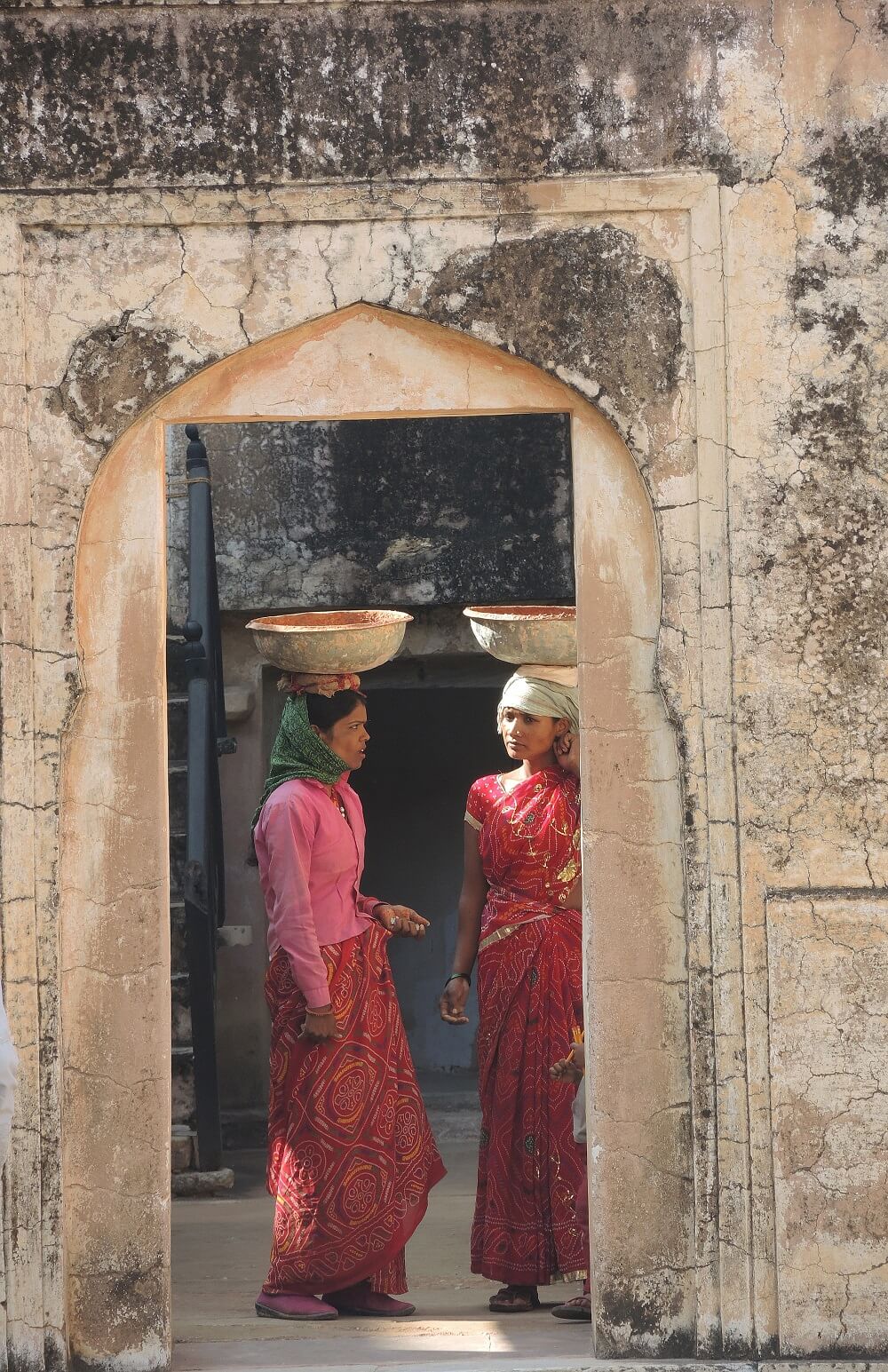
Photo: Creative Commons
The gender difference
Yet, the differences in the impact on women and men have been acknowledged.
Women and children are also easy targets of violence and discrimination during any natural disaster. “Despite their vital role in rural economies, women and girls who live in rural areas are often doubly affected by discrimination, exploitation, and gender-based violence,” said Rajib Ghosal, Regional Senior Technical Advisor, Climate Change and Child Poverty focal Point for Asia-Pacific for Save the Children, “The environmental crisis aggravates pre-existing patterns of discrimination and violence against women and girls.”[15]
In the book Global Climate Justice: Theory and Practice, edited by Fausto Corvino and Tiziana Andina, the differences of exposure and vulnerability to climate risks between men and women have been outlined:
- “Gender differences affect a person’s ability to access goods and services. Certain markets and institutions limit women’s access to credit and labour opportunities….According to a World Bank survey in 141 countries, 103 countries impose legal restrictions on women that hamper their economic opportunities.”
- “Unlike men, women face significant challenges in influencing any level of policy or decision-making within their communities….Women are often under-represented or completely absent from the institutions that make or negotiate decisions regarding how their society might tackle climate change.”
- “Socio-cultural norms often limit women’s knowledge of the information and skills they need to avoid danger, including the ability to swim or climb trees when escaping rising water levels….The percentage of illiterate women in the world is much higher than that of men…they are more likely to lack the information and means of communication to act accordingly in the event of a natural and catastrophic event.”
Climate Change and health impacts on women
Women differ from men in their physiologic compensation to elevated temperatures, which contributes to their biologic vulnerability. Cultural vulnerabilities include poor access to healthcare and cooling facilities due to personal safety concerns and a lack of access to personal transportation, culturally prescribed heavy clothing garments that limit evaporative cooling, and a lack of awareness of women’s vulnerabilities to heat among local, national, and global decision makers and health care personnel. Pregnancy also contributes to vulnerability.
“… In the aftermath of climate driven disasters, women and girls—especially the elderly or those living in lower socioeconomic circumstances—are at higher risk of physical, sexual, and domestic violence,” states the International Federation of the Red Cross and Red Crescent, 2007; UNDAW, 2001.[16]
A World Health Organization report on Gender, Climate Change and Health finds: “There is good evidence showing that women and men suffer different negative health consequences following extreme events such as floods, windstorms, droughts and heatwaves. A review of census information on the effects of natural disasters across 141 countries showed that although disasters create hardships for everyone, on average they kill more women than men, or kill women at a younger age than men. These differences persist in proportion to the severity of disasters and depend on the relative socioeconomic status of women in the affected country. This effect is strongest in countries where women have very low social, economic and political status. In countries where women have comparable status to men, natural disasters affect men and women almost equally.”[17]
Strengthening the fight against Climate Change
It is crucial to close gender gaps and empower women in agrifood systems to effectively fight Climate Change and tackle food insecurity.
The report, The Status of Women in Agrifood Systems, highlights that “discriminatory social norms and rules” are significant drivers of gender inequality, adding that these are “slow to change”. Examples of such norms include the expectation in many places that women and girls will perform unpaid domestic labour, which limits the amount of work they can do outside the home.
The report says that the Covid-19 pandemic had a “greater negative impact on women’s livelihoods in agrifood systems than they do on men’s…During the pandemic, women suffered the most from food insecurity and lost more jobs (22 percent) than men (2 percent)…Climate Change also affects women’s capacity to adapt. For example, discriminatory norms can reduce women’s access to climate information, which is crucial to understand how to adapt to global warming.”
At least 939 million women aged 15 or older experienced moderate to severe food insecurity in 2021, compared with 813 million men, the report says[18]
A Harvard Business Review report titled We Can’t Fight Climate Change Without Fighting for Gender Equity brings out the connection between gender equity and environmental sustainability. “The good news is, while women are especially vulnerable in this climate crisis, they are also uniquely positioned to act as powerful agents of change. On average, women have smaller carbon footprints than men, more-responsible attitudes towards Climate Change, and greater interest in protecting the environment…”[19]
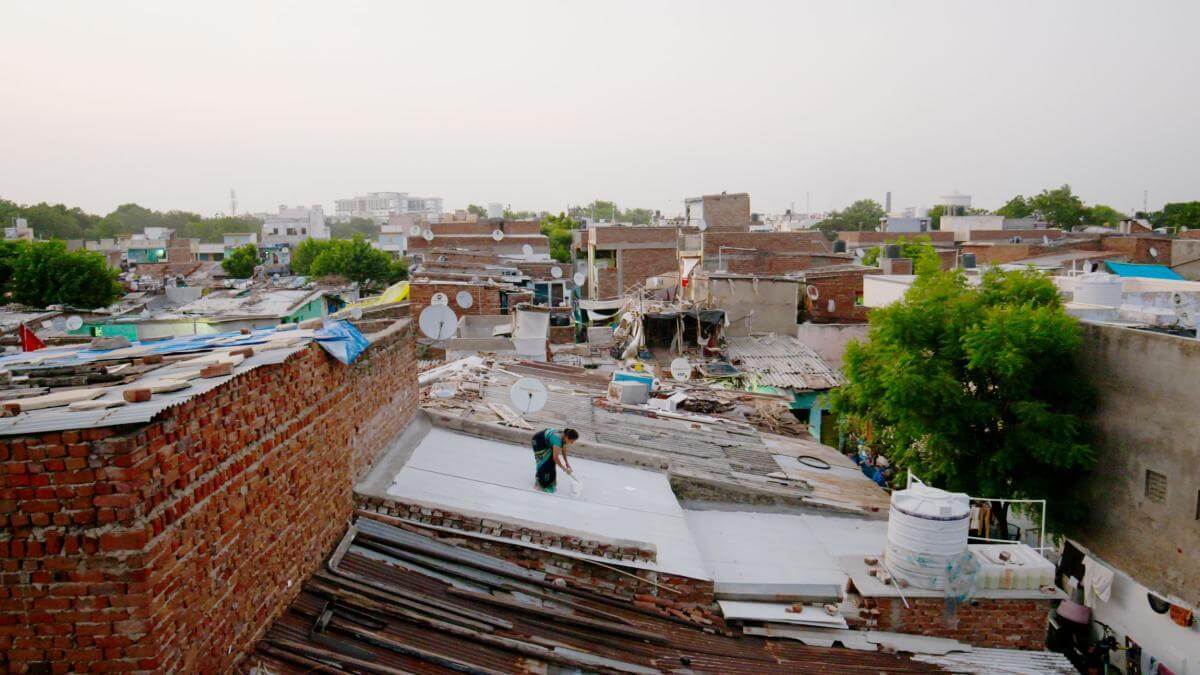
Photo: Ashden/ Mahila Housing Trust
Positive measures set examples
As the impacts of Climate Change destabilise built urban environments, spurring increasing numbers of displaced and migrating peoples and thereby heighten the risk of urban crises, it is morally and environmentally imperative – and politically and economically just – that human rights of women and girls are promoted and upheld, and also that they participate fully, equally, and meaningfully in urban climate adaptation and mitigation decision-making. A well-designed and inclusive climate action [20] can help cities become more equitable, thriving places for all residents, write Madeleine Galvin and Anne Maassen.
“In Ahmedabad, urbanisation intersects with Climate Change-induced heat extremes, water scarcity, flooding and public health. After a deadly heat wave in 2010 claimed more than 1,300 lives, the Mahila SEWA Housing Trust[21] began training local women leaders (Vikasinis) to conduct climate vulnerability assessments in Ahmedabad’s slums. The group also tested practical climate resilience solutions for households and neighborhoods through partnerships with technical institutions, innovators and technology providers…local communities and female leaders now have increased access to city-level initiatives and decision-making, and have helped make climate resilience a municipal priority.”[22]
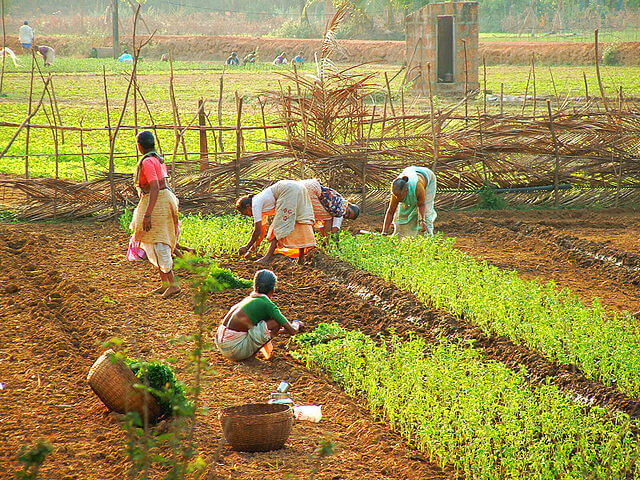
Photo: Creative Commons
Recognising the immense contribution of women fighting the climate crisis, TIME magazine featured 15 profiles in the year 2019. Given their position on the front line of the Climate Change battle, women are uniquely situated to be agents of change – to help find ways to mitigate the causes of global warming and to adapt to its impacts on the ground.[23]
Gender and climate action made it to boardrooms and consultancy firms too. This report from the international firm Price Water Cooperhouse makes the point that “women’s knowledge of natural resources and their potential to develop overarching solutions to climate change is attainable and can create co-benefits. For example, climate action increasingly recognises women’s knowledge of resource management that can bring long-term changes to sustainable practices. Efficient, effective and equitable low-carbon development policies must target women as key and core stakeholders wherein their knowledge can be harnessed, and simultaneously empower them to address poverty reduction. Right to economic assets such as land and the need to connect women to market opportunities are common objectives that should be envisioned to be achieved.”[24]
Cover photo: Creative Commons

